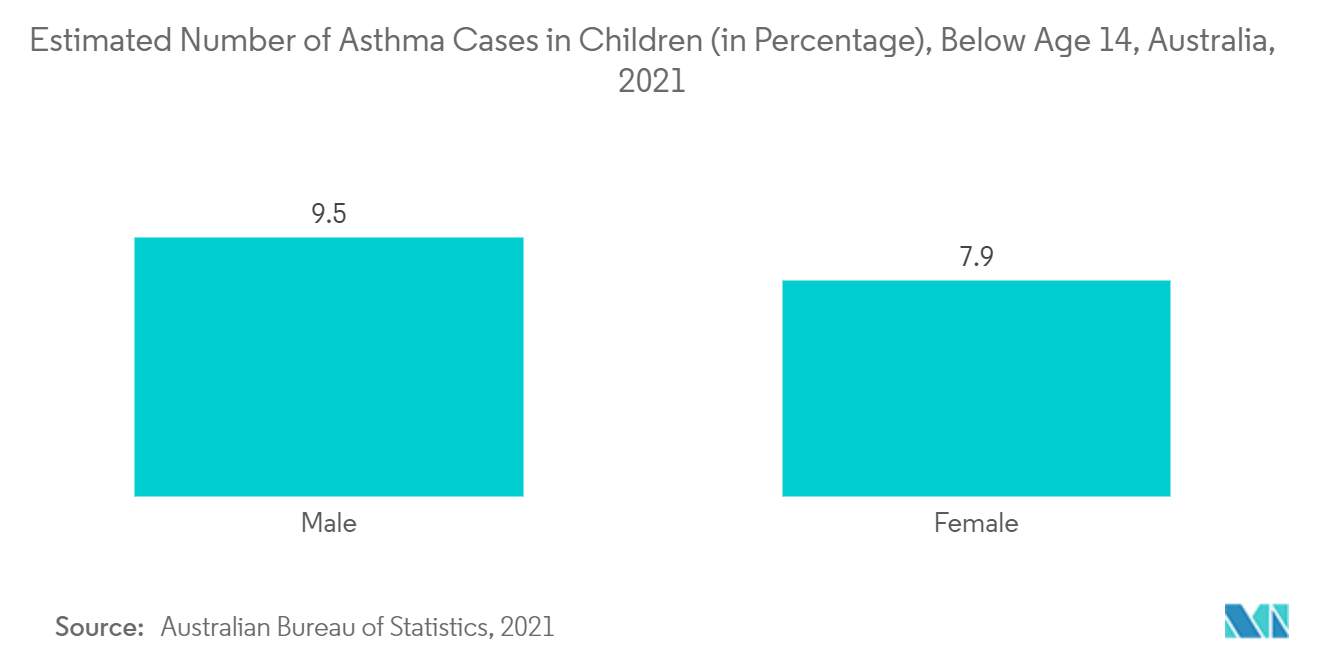Market Trends of Australia Neonatal and Prenatal Devices Industry
This section covers the major market trends shaping the Australia Neonatal & Prenatal Devices Market according to our research experts:
Incubators Sub-segment Expected to Hold a Significant Market Share
Neonatal incubators are often necessary for infants. The infants need respiratory support, ranging from extra oxygen to continuous positive airway pressure (CPAP) or mechanical ventilation. The temperature regulation of infants is among the major factors to be controlled in neonatal incubator cases. The companies have varied devices on several parameters, among which temperature regulation is essential, as severe temperature differences lead to neonate heat loss, hypothermia, and apnoea, which are closely related to airflow and air velocity. The increasing birth rate is expected to increase the demand for incubators to support newborn babies if required. A press release published by the Australian Bureau of Statistics in October 2021 stated that in 2021, 309,996 births were officially recorded, up 15,627 (5.3%) from the previous year. The overall fertility rate for all Australian women was 1.70 births per woman. The general fertility rate for Aboriginal and Torres Strait Islander women was 2.34 births per woman. The gender ratio at birth was 105.2 male births for every 100 female births because 51.3% of the population was male.
Initiatives by key market players are another factor in market growth. In March 2022, The MINC+ Benchtop Incubator was launched by Cook Medical for clinical embryologists and IVF clinics in Australia. Such product launches are expected to increase prenatal care in the country, which is expected to augment market growth during the forecast period. Similarly, in June 2021, an incredible 12.2% increase in the number of live births for those who are having trouble getting pregnant has been achieved thanks to research by Australian scientists who developed a novel incubator and an improved version of the fluid in which embryos develop. The Geri incubator, available to Genea patients, photographs an embryo every five minutes at up to 11 cross-sections. It then compiles the images to display detailed time-lapse footage on a screen, enabling scientists to examine embryos without subjecting them to harmful conditions, such as temperature changes. Thus, such initiatives are expected to increase market growth during the forecast period.

Respiratory Assistance & Monitoring Devices Sub-segment to Show Significant Market Growth
Respiratory assistance and monitoring Devices are used to monitor and treat patients suffering from respiratory disorders such as asthma, COVID-19, etc. Factors such as the increasing prevalence of respiratory diseases are expected to increase market growth. In September 2022, a research study published in the National Library of Medicine stated that the prevalence of protracted bacterial bronchitis (PBB), chronic suppurative lung disease (CSLD), and bronchiectasis is high in aboriginal children, and regular wet cough increases with age in Australia.
The availability of action plans provided by the government is another factor in market growth. The action plans would provide knowledge about using devices to monitor and treat diseases. In July 2022, the Australian Institute of Health and Welfare estimated 35% of people with self-reported asthma across all ages had a written asthma action plan. Two-thirds (66%) of children under 18 had a written action plan. Thus, such high availability of action plans for children is expected to increase market growth during the forecast period. Thus, the increasing prevalence of respiratory disorders and the availability of action plans are expected to increase segmental growth over the forecast period.


